-
Jaddico Estate
-
Uggìo-Punta Aquila Estate
-
The Ostuni vineyard
-
Palombara Estate
-
Padula di Geremia Estate
-
Torre Testa
-
Visellio
-
V’itra
-
Jaddico
-
Palombara
-
Oltremé
-
Miraglio
-
Punta Aquila
-
Lamo
-
Sumaré 27 months
-
Sumaré 60 months
-
Salende
-
Libens
-
Lamiro
-
Giancòla
-
Saturnino
-
Oltremé Rosato
-
Torre Testa Rosato
-
Aleatico
-
Aspettando San Martino
-
Cantine Aperte
-
La Vendemmia delle donne
-
RAP
-
Rubino Wine Party
-
Saturnino Wine Party
-
Tenute Rubino Wine & Friends
RAP

Born from an idea by Luigi and Romina to give voice to a heritage of values and experiences that has its fulcrum in the connection, deep yet innovative, with the territory and the city, promoting its resources and image.
To seek beauty in wine through the combination with art, a seductive encounter between two parallel paths that encapsulates the entire history and culture of a civilization.
RAP aims to develop, with continuity and constancy, the relationship with contemporary artists by entrusting them with the creation of a work dedicated to a theme, different every year.
The goal of the initiative is to build, over time, a true Collection of contemporary art, to be housed in the spaces of the new upcoming Jaddico winery, and to offer wine tourists and citizens a series of cultural and exhibition events in a territory with over 2,000 years of vine civilization and wine culture.
Ilaria Caravaglio

Graduated in Modern and Contemporary Art History from the University of Salento, Ilaria Caravaglio, an art historian and curator, has had significant experiences in the field since a very young age. After her studies at the University of Salento, she moved to Rome in 2008 for an internship at the Ministry of Foreign Affairs. There, she not only dealt with the permanent Farnesina Collection but also worked on the traveling exhibition Experimenta, allowing her direct contact with both emerging and established young artists, many of whom are now internationally renowned. Subsequently, she began collaborating as a curator at the historic Galleria Marino (Piazza di Spagna) and simultaneously attended the master’s program in Contemporary Art Curator at MLAC, La Sapienza University, with Simonetta Lux and Domenico Scudero. From 2010 to 2013, she served as the artistic director at another historic gallery in the capital, Bosi Artes, and was an editor for industry publications such as monitorARTI and art a part of cult(ure). In 2011, she and a colleague won the competition announced by the Puglia Region Principi Attivi, founding the Cultural Association AttivArti. They debuted with a nationally resonant artistic event: Illuminando Lecce. She then collaborated for about two years with the Ducci Foundation as the art sector manager, overseeing the artistic direction of both the Rome and Fez (Morocco) locations. In 2015, she returned to Brindisi, where she continues to work as an independent curator and founded the Cultural Association Levante. Currently a teacher in secondary education, in addition to contributing to various industry publications, she curates exhibitions and cultural events.
Dario Agrimi

Born in Atri (Abruzzo) in 1980, Dario Agrimi has been working in the field of contemporary art since the age of 18. Currently based in his studio in Trani, he creates works that oscillate between reality and fiction, encompassing painting, installation, and emphasizing the realms of photography, sculpture, and video. Agrimi has participated in numerous solo and group exhibitions in various cities, both in Italy and abroad. His exhibitions include the 54th International Art Biennale in Venice and several international contemporary art fairs in Europe. In 2017, his works were featured in the 57th International Exhibition La Biennale di Venezia, Palazzo Grassi, Guggenheim in Venice, and the Mambo Museum in Bologna. He teaches at the Academy of Fine Arts in Bari, and his latest project, “Sinonimi e Antonimi,” aims to be present in some of the most important and renowned exhibition spaces globally.
Mariantonietta Bagliato
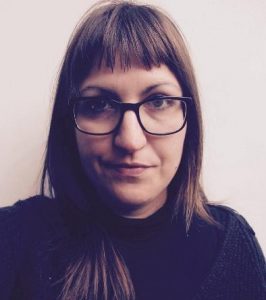
Born in 1985, Mariantonietta Bagliato resides between Bari and Prague. Her artistic exploration is consistently influenced by figurative theater, resulting in work characterized by the systematic use of fabrics that transform into sculptures, installations, and stitched drawings. She attended the Academy of Fine Arts in Bari and currently serves as a professor of Graphic and Pictorial Disciplines. Bagliato has participated in numerous solo and group exhibitions, both nationally and internationally. Some of the recent exhibitions include “Cuore Mio” at Nico Gallery (Bari, 2021), “Casa Vuota” (Rome, 2019), and “Like a Little Disaster” (Polignano a Mare, 2018). She has exhibited and been recognized as a winner and finalist in various awards, including the Fiber Art Award in Chieri 2021 (first prize), Federculture Award 2012, Arte in Laguna Award 2011 in Venice (two special prizes), Pinacoteca Agnelli Award 2009, and Artissima in Turin.
David Cesaria
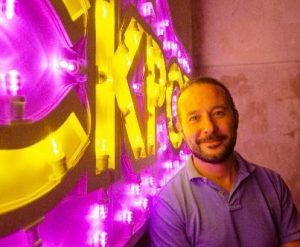
Born in Mesagne (BR) in 1976, David Cesaria lives and works in Manduria (TA) as a painter, sculptor, and architect. After completing his degree in Architecture in Florence and specializing in Exhibit Design at the Domus Academy in Milan, he furthered his education in Museum Design with Oliviero Toscani at the MACRO Museum in Rome. He has received several national recognitions, including the “Pagine Bianche d’Autore” for the Puglia region and the urban redevelopment project in Potenza with Gae Aulenti. He won the first prize for the “Monumento alle donne del Mare-San Benedetto del Tronto” and the third prize in the “Light Tales” competition in Brindisi in 2018. In recent years, his artistic exploration has primarily focused on Luminarie pop, a project that blends tradition with sharp irony. This initiative has led his works to be acquired by numerous Italian and international collectors.
Pierluca Cetera
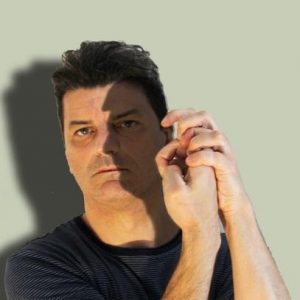
Born in Taranto on November 13, 1969. In 1998, he created “Il simposio del dentista” for the group exhibition “Unheimlich” in Castellaneta. In 2003, he exhibited the series “Replay” in Shanghai, and in 2004, “La conquista della posizione eretta” in the Vorraumspace of Urs Meile’s Galerie in Lucerne. Between 2005 and 2012, he executed various painting projects exhibited in Milan and its surroundings, exploring voyeurism, sacred art, and pornography. In 2010, he began collaborating with the theatrical group Opera. From 2011 to the present, he has created several installations such as “Sonno,” “Piogerella e Fuochino” (2016), presented at MoArtSpace in Xinmi. Between 2020 and 2021, he initiated the project “Prossimamente,” and with the velvet painting “Segreti,” he participated in an exhibition in Athens and later in Palermo. He currently resides in Gioia del Colle, where he teaches Art History and Drawing at the scientific high school “Canudo.”
Giuseppe Ciracì

Giuseppe Ciracì was born in 1975 in Brindisi, initiating his professional journey in Puglia before moving to Milan. There, he delved into figurative painting, engaging in an original reinterpretation of the history of ancient and modern art. He has been a finalist in various national awards, including the Celeste Prize, Mondadori Art Prize, Arte Laguna Prize in Venice, Zingarelli Rocca delle Macìe Painting Prize, and the Ora Prize. He won the 2nd edition of the Giuseppe Casciaro Painting Prize. In 2015, art critic Alberto Dambruoso selected him to participate in the BoCs Art Residency in Cosenza. Currently, Ciracì is involved in the editorial project “Gli origami di Stendhal” and works as a teacher of Art, Image, and Pictorial Disciplines at secondary schools in Brindisi. He also teaches Graphic, Pictorial, and Scenographic Disciplines at the Simone – Durano Artistic and Musical High School in Brindisi. In Italy, he is represented by Kyro Art Gallery in Pietransanta – LU – (www.kyroartgallery.com). He lives and works in Brindisi.
Francesco Cuna
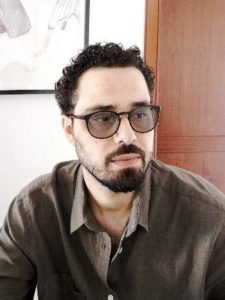
Francesco Cuna was born in Galatina (Lecce) in 1978 and later moved for work to France and America; he currently lives and works in Calimera. He graduated in painting from the Academy of Fine Arts in Bologna, starting his exhibition activity in 2000. Irony and meticulous attention to the pictorial element are constant features in his works, making them deeply recognizable through a play between reality and fiction. Francesco strives to transfer a layer of the “already seen” into his creations, with the purpose of revealing a possible destabilizing function during the unfolding process. Among his recent publications are “Pongo” (2020), “Tracce di Eden” (2015), and “Recent Works” (2014). A versatile artist who has traveled the world with his art, his most recent appearance in an international exhibition titled “Dialogo secondo: Torre di Markellos” in Aegina (Greece) dates back to 2018. In 2019, he participated in an Italian exhibition, “Project Rooms. Arcano,” held at the former Teatini Convent in Lecce.
Emilio D’Elia
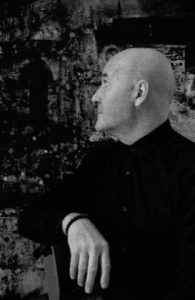
After studying at the Artistic High School and the Academy of Fine Arts in Lecce, Emilio D’Elia, born in San Pietro Vernotico in 1958, moved to Rome for several years before settling permanently in Paris. His first exhibitions date back to the late ’80s, and some of them include: “Primovere” at A.A.M. gallery in Rome, “Mandalaluce” at Agarhe Nisple St Gallen (Switzerland), “Piccolo Formato” at Kouros Gallery in New York, “Celeste” at Damian Bouquet gallery in Paris, “Terre di Cielo” at the Italian Cultural Institute in Paris, and “Libri d’artista” at Demetra gallery in Milan. Emilio D’Elia’s works have been presented at various fairs, including those in Frankfurt, Chicago, Brussels, Artissima, Arte Verona, Attualissima (Florence), and his pieces are part of public and private collections such as the A.A.M. Collection in Rome, Ferruzzi Finanziaria Collection in Ravenna, and the modern and contemporary art collection at Accademia Carrara, Bergamo.
Angelo Filomeno
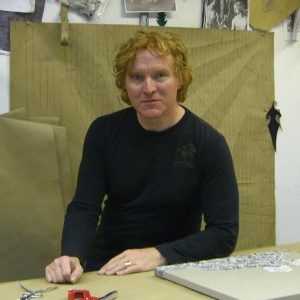
Born in Ostuni in 1963, Angelo Filomeno currently lives and works in New York. His works serve as metaphors for personal situations or memories that explore themes of solitude, superstitions, death, and fears. Developed through an iconography with sometimes macabre references, his pieces exude an element of great elegance and sophistication, thanks to a skillful use of embroidery. His works have been featured in significant international exhibitions, including the 52nd Venice Biennale (2007), ARS 06 at the Kiasma Museum of Contemporary Art in Helsinki, Re:Collection at the Museum of Arts and Design in New York, and Threaded at the Center for the Arts in Virginia. Some of the major international exhibitions he has participated in include the Savannah College of Art and Design in Atlanta, Georgia; Frist Center for the Visual Arts in Nashville, Tennessee; and the Italian Institute of Culture in New York and Toronto.
Pierpaolo Miccolis

Pierpaolo Miccolis (Alberobello, 1985) lives and works in Puglia. His artistic training leads him to develop different forms of language. He often resorts to installation and photography, using painting techniques (watercolor) and focusing on the narration of environmental, botanical, ethological, and metamorphic factors. As a great expert in tarot and other esoteric disciplines, Pierpaolo creates works and subjects inspired by the theme of esoteric rituals practiced in the South, highlighting the universal nature of superstition and magic. After winning the International Painting Prize “Zingarelli” in 2010 and participating in the short film by Alessandro Piva focused on the relationship between the artist, his works, and the surrounding territory (2014), in 2019, he created his first monograph: “Famiglio.” Among the most relevant exhibitions are “Cartam,” Museo del Presente, 2019; “Induced Spirits,” Spazio Microba, 2018; and the XVIII Biennale di Penne, 2015.
Ezia Mitolo
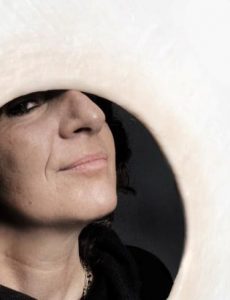
A sculptor by training, Ezia Mitolo studied under Francesco Somaini and Nicola Carrino in Puglia. In the late ’80s and early ’90s, she attended the Antonio Ratti Foundation in Como, studying with Giuliano Collina and other international artists such as Arnulf Rainer and Georg Baselitz. Her self-expression extends through figurative arts (sculpture and painting), but she also favors avant-garde expressive forms, ranging from video performance to interaction with the audience. She has received numerous awards, from the first prize (1998) in the young artists’ section of Art&Maggio Arena Puglia to her first solo exhibition in Milan. She later exhibited in Rome at the XIV Quadriennale. Ezia has participated in numerous exhibitions and fairs, both nationally and internationally (Paris, Prague, Vienna, Edinburgh), culminating in her recent inclusion in the MarTa of Taranto and the Italian Archive of Photographic Self-Portrait at MUSINF in Senigallia. Her most recent work dates back to 2021 when she designed and realized “Il giardino dei Bisbigli,” an urban intervention in the city of Taranto – in the redevelopment district of Porta Napoli – where she has lived since 2007.